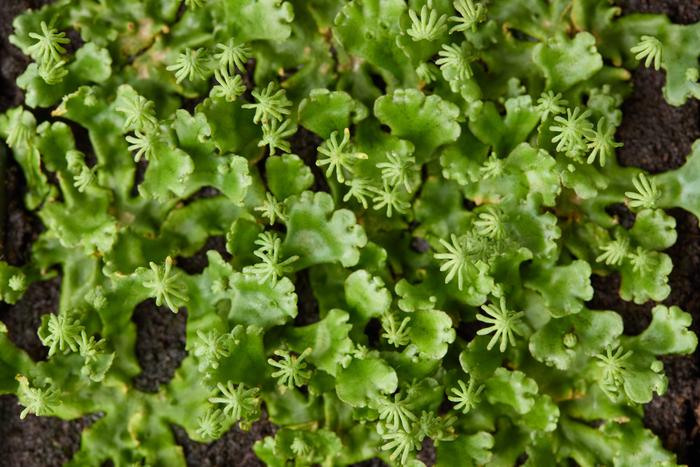As climate change increasingly influences global ecosystems, the ability of plants to adapt to new environments becomes a matter of urgency, especially for agricultural crops. These plants must exhibit resilience to extreme weather conditions, such as drought and heat, to ensure food security in an uncertain future. Remarkably, many plants show an innate capability to adapt to various climates, exemplified by Arabidopsis thaliana, which flourishes in diverse locations, from the chilly terrains of Sweden to the sunlit landscapes of Italy.
Recent research sheds light on the intricate genetic mechanisms that enable plants to thrive in fluctuating climates. A collaborative study led by researchers from the Gregor Mendel Institute of Molecular Plant Biology, including Liam Dolan and Frédéric Berger, along with Kelly Swarts from the Umeå Plant Science Centre and Masaki Shimamura from Hiroshima University, has explored the genetic foundations of climate adaptation in Marchantia polymorpha, a notable model organism in plant research. The study, published in Current Biology, offers fresh insights into how specific genetic variants contribute to the adaptability of this bryophyte under varying environmental conditions.
To unravel the genetic underpinnings of climate adaptation, the researchers constructed a population genomics database by examining genetic variation across regional subpopulations of Marchantia polymorpha collected from diverse geographic locations, including Europe, America, and Japan. By correlating this extensive genetic dataset with global climate data, they identified genetic variants associated with climate resilience—specifically, those linked to warmer summer temperatures and variations in summer precipitation levels. This groundbreaking approach not only characterizes genetic diversity within populations but also highlights the significance of local environmental conditions in shaping genetic adaptations.
Liam Dolan, a leading figure in the study, emphasizes the importance of these findings: “Comparing populations in Europe and Japan revealed significant associations between genetic variants and climate variables. These adaptations are crucial for optimizing reproduction in distinct climatic scenarios, showcasing the evolutionary pressures plants face amid changing environments.” These insights can provide critical frameworks for improving crop resilience in agricultural practices, thereby enhancing food production in the face of climate-related challenges.
The researchers also observed striking differences in genetic variability among the populations studied. European populations of Marchantia polymorpha exhibited high levels of genetic variability, suggesting a broad ability to adapt to localized environmental pressures. In contrast, genetically isolated populations from Japan displayed uniform genetic profiles, indicating a different adaptive response to their specific climatic conditions. Such patterns underscore the complexity of adaptive strategies employed by plants and suggest a need for diverse reproductive strategies in different geographical contexts.
One of the significant contributions of this study is the establishment of a population genomics database for Marchantia polymorpha, the first of its kind for this species. This database serves as a resource for researchers globally, facilitating deeper investigations into genetic variability and adaptation mechanisms across various environmental settings. As Liam Dolan notes, “We are excited to expand this database with samples from around the world, which will enrich future research endeavors.” This repository will empower scientists to explore a broad spectrum of biological questions and potentially revolutionize our understanding of plant biology.
The implications of this research extend beyond basic science; they hold relevance for the agricultural sector. By understanding the genetic basis for climate adaptation, researchers can develop crop varieties that are better suited to withstand the specific challenges posed by climate change. This adaptability may be key to maintaining agricultural productivity and ensuring food security in an era marked by environmental instability.
Furthermore, the study illustrates the importance of interdisciplinary approaches that combine genetics, ecology, and climate science. By leveraging diverse methodologies, researchers can gain a more comprehensive understanding of how plants—as both vital components of ecosystems and critical resources for humanity—respond to climate changes. This multidisciplinary framework is essential as we face the daunting challenge of preserving biodiversity while ensuring sustainable food production.
The research on Marchantia polymorpha represents a growing body of work focused on bryophytes, which have often been overlooked in discussions about plant adaptation and climate resilience. However, their evolutionary history and unique biological characteristics make them indispensable models for studying life’s adaptability on Earth. By illuminating the genetic aspects of plant responses to climate variations, this research paves the way for innovative solutions to future environmental challenges.
In summary, the pioneering study on Marchantia polymorpha highlights the intricate interplay between genetics and environmental adaptation. It underscores the critical need for ongoing research into plant biology, particularly in the context of a warming planet. As we confront the realities of climate change, understanding the genetic mechanisms that enable adaptation will be crucial in developing resilient crops and preserving our natural ecosystems.
By providing a framework for future explorations into plant adaptability, the work of Dolan and his colleagues not only contributes to our scientific knowledge but also offers practical implications for society’s broader goal of sustainable living. This research serves as a reminder of the resilience of life and the ongoing quest to understand the biological foundations that support it amid a rapidly changing world.
Subject of Research: Genetic Adaptation of Marchantia polymorpha to Climate Change
Article Title: Population genomics of Marchantia polymorpha subsp. Ruderalis reveals evidence of climate adaptation.
News Publication Date: 10-Feb-2025
Web References:
References:
Image Credits: ©Johannes Hloch/GMI
Keywords: Climate change adaptation, Local adaptation, Genetic variation, Plants
Tags: Arabidopsis thaliana climate adaptabilityclimate change impact on agriculturecollaborative research in plant biologyenvironmental adaptability in bryophytesextreme weather resilience in cropsfood security and climate adaptationgenetic mechanisms of plant adaptationgenetic variants in climate adaptabilityMarchantia polymorpha genetic studymolecular plant biology insightspopulation genomics in plantsresilience of agricultural crops




